Flower Crocosmia - a wayward and graceful bulbous plant belonging to the Iris family. Exotic beauty fell into our gardens from distant Africa. Starting from the first weeks of spring, the magnificent linear foliage begins to be blossoming and closer to the middle of the summer among bright greenery appear arrows, densely decorated with brightly fiery colors. Up to the frost crocosmia retains its splendor, so it takes a special place in landscape design.
Crocosmia, description of the plant
Crocosmia (the preceding name of Montstourment) is firmly rooted in European gardens since the XIX century. Unpretentiousness and simplicity in care, allows crocosmannation without fears to winter in the open ground. The main thing is to plant a plant into a suitable soil and in a favorable place.
From the Greek Crocosmannia is translated as "the smell of crocus". This name is due to the aroma of inflorescences, which is very reminded by Saffron. But there is a plant and another name - Japanese gladiolus. It is caused by the presence of a floweros-resembling gladiolus at the montourism.
Crocosme refers to many years of tuberukovichny plants. Clubneelukovitsa is covered with a multilayer mesh shell. The above-ground portion is represented by branched stems and denselysting linear foliage.
The height of the plant depends on the varietal features and can fluctuate from 60 cm to one and a half meters. Flowers are cloudy and small, with a diameter of no more than 4 cm. They are collected by 4-5 pieces in the blurred inflorescences. Colors color Bright and saturated: Fiery-yellow, orange, pink-red, white. Fruit of plants - box with seeds.
Crocosmia is considered a relative of many plants. These include irises, crocuses, freesies, as well as Ferraria and gladioli. In the gardens, the crocosmia is well adjacent to Lilyika and Salvia, or combined with Cannes and Echinacea. The plant is suitable and to the cutting - the floweros retains freshness up to two weeks.
Crocosmia - landingseeds
Grow crocosmium from seeds is quite troublesome. This process requires considerable skill and patience. Plant blooms two years after planting seeds, but the final result is attached to the effort.
Features of crocosmia sowing
For seed reproduction, it is prudent to use only a confused method. Theoretically, seeds can be sung in the opening of the soil, but the chances of waiting for the first shoots are negligible.
In the first days of March, the seeds are soaked in the water that needs to be changed every 6 hours. Then the prepared sowing material is seeded in a favorable substrate. It includes not only land and sand, but also a peat with humus. To maintain the temperature regime, the container with seeds is covered with the film and leave in a sunbath until the first sprouts appear.
Crocosmia Clear Care Rules
The repentance provides for the implementation of conventional methods of agrotechnics. After the appearance of germs, the coating from the container is removed and the plant is causing: regular watering as needed and careful loosening of the substrate about even rapid sprouts. At the same time, the soil should be humid, otherwise the bulb of the plant hesitates.
Crackosmia picking
After the appearance of two or three rapid leaves, it comes time to dive seedlings into a more suitable container a little larger diameter. There they will stay until the landing. 10-14 days before the transplantation, plants should be taken out to the street with the purpose of hardening, it will facilitate their adaptation to new climatic conditions.
TO rocosmium, landing and carein the garden
Although the crocosmy easily tolerates the transplant and is firmly rooted in the new soil, it is worth complying with some rules. This will ensure healthy growth and bootonization of the plant.
Suitable time for landing crocosmia
Landing a montstour to open ground is carried out after it warms up to 6⁰c. This usually happens in April. Crocosmia prefers solar sections with loose and moisture-permeable soil. It is important that the soil waters passed deeply, because the plant does not tolerate the excess of moisture in the roots.
In order for Crocosm to be well rooted and generously bloomed, the training of flower beds is held long before it landing. At the end of the autumn, each square meter of the soil is enriched with such a mixture: potassium chloride (20 g), superphosphate (40 g), as well as lime (100 g), humus (2 buckets).
On the flower bed, the ranks are prepared at a distance of 25 cm. Saplings are planted in shallow holes, while maintaining the distance between them at least 10 cm. After that, the crocosmy is watered and transformed from the direct rays of the sun for several days.
Growing crocosmia
Crocosmium is very modest in terms of soil and climatic conditions. But it should be taken into account that it originates from hot countries and provide it with consultant growing conditions in the garden.
To ensure full care, the crocosme will need quite a few conditions. First of all, a moderate watering should be followed. Moisturize the soil is needed three times a week. After irrigation, a dense crust is often formed around the bulbs, so it is advisable to regularly loose soil.
Any gardener wishes his work to be crowned with success, and the plant pleased with her tender and bright flowering. Therefore, to enhance the bootonization of crocosmia, care should provide for timely fertilization.
If the soil in which germs were planted, it does not differ from fertility, it is necessary to feed the plants every 10 days after the first two leaves appear. As a fertilizer, you can use the infusion of a cowboy in a ratio with water 1:10, or complex mineral fertilizers per month per 1 liter of water. At the bootonization stage, fertilizers enriched with potassium are predominantly used.
Crocosmia reproduction
Montstourcy breeds two methods: seed and vegetative. How to grow a plant from seeds was negotiated above, and the vegetative method is based on the division of tuberukovits.
Crocosmia's clubnevukovitsa vividly fines children who are able to actively bloom in the second year. To prevent the krokosmia flowering stop, the bulbs should be separated and searched. For this, the clubs are completely digging, from the maternal bulb carefully separate children and transplant them into the prepared flower bed. The right time is the same as for landing seedlings - April-May.
If the bulbs are too small, you can first put them in a pot, and when they grow up, together with an earthen room, fall into the ground closer to July.
The plant planted by fissioning bulbs blooms for the second season, so the crocosmium is better to buy in the tubers, than three years to grow it from seeds.
Diseases and Hazardous Pests Crocosmia
Montbouria is inconspicuous to many diseases, but the lack of gentle care and excessive irrigation can generate such diseases:
- Gray rot - putrid bacteria rapidly multiply in conditions of high humidity and cover the bulbs of a gray bloom with an unpleasant smell. To warn it, it is recommended to observe watering regime.
- Fusariosis is a fungal disease, characterized by yellowing and falling out of leaves, floweros deformation and the subsequent change in the color of the flowers. For treatment, fungicides are applied.
- Herbity is an incurable virus disease that is distributed through cycades. Distinctive features of the disease - yellowing and drying foliage.
To prevent different diseases, it is recommended before planting seeds and bulbs to process 1% solution of manganese.
Among pests, which often affect crocosmium allocate:
- TRIPS are pests that feed on plant juice. Their presence is shown in small colorless stains or stripes. Over time, the foliage disincurses, the stalks are twisted, and the flowers disappear. For these pests, such funds are active: carbofos, agraverttin, confident.
- Medveda - insects, eating plants bulbs. For Salov, the bear in the fall of a hole with a depth of about 50 cm and poured into it a manure that serves as a bait. At the end of the autumn, when the bear was already equipped for wintering, the pit rolls and destroy the whole family.
- The web tick is pest affecting the above-ground part of the plant. Ticks suck juices, which leads to the dedication of leaves and drying the entire plant. For the struggle, any insecticides are suitable.
Crocosmia after his flowering
In improving the growth of clubnelukovitz, care is played after the end of flowering and further preparation of the plant for winter cold.
Collection of seeds
As a rule, the crocosmia seeds are inappropriate, since the plant is perfectly multiplied by the division of bulbs, so you will be fully secured by planting material. If you are just going to get a plant, to grow crocosmia it is better to buy seeds in a specialized store.
If you want to assemble your own seeds, you need to wait until the boxes with the seeds completely mature, and then touch them carefully.
In order for the plant to give all the forces on the growth of the bulbs, you should cut the flowerons as they are fledged. Also, after the end of flowering, fertilizers are completely stopped.
Preparation of crocosmia to winter
Crocosmia has many varieties, but not everyone is distinguished by frost resistance.
Types of small-ceiling montstourity are well tolerated by strong frosts, but the tubers should be stolen. Plants sprinkle in the southern regions, winter in the ground, which is mulched by a compost, and on top are covered with a 20-centimeter layer of a huskoth or dry foliage.
The large-flowered species that grow in northern latitudes are necessarily digging with the arrival of October, when the clubnellukovitsa has already hustled with new kids. The nests with kids are laying on preservation in general, as young bulbs soon dry out. The bulbs first dried for several days at a temperature of 10 ° C, and then laid into the boxes and leave in the cellar to spring. The optimal storage temperature of the montstour bulbs is + 5- + 8⁰С.
A few weeks before disembarking, from the bulbs, the dry stems with the leaves are separated from the bulbs, they separate the children and soaked the sowing material in a solution of mangarteau or another etched.
From the bulbs who were wintering in the ground, with the arrival of spring remove the shelter, and cut the old leaves. Once every two or three years they are transplanted with the aim of separating children.
Types and popular varieties crocosmia, photo
Among the wild species of crocosmia there are more than 50 varieties, but the following culture is most often growing:
- Crocosmia Masonorum - a plant in the form of a small bush with bright green sword-shaped leaves, among whom growing flowers with flame-orange flowers. This type of plant grows up to 60 cm in height and covered in small colors by mid-July. It has the highest frost resistance.
- Crocosmia Golden - a plant from southern Africa regions. Distinctive features of this species are linear leaves and small flowers of golden, scarlet and orange colors. The flowering period falls for the first weeks of autumn.
- Crocosmium researchelate - Rankan-minded view, gentle bright orange flowers whose blossoms are blown up by mid-July. For this species, high leaves of corrugated form are characterized, reaching 150 cm in height.
- Krokosmia Garden (ordinary) is the first hybrid that began to grown in the garden. The plant, obtained as a result of the selection of golden crocosmia and pelt, grows up to 1 m with branched stems and represented foliage. Flowering occurs throughout July-August.
- Pots Crocosmia - the plant grows well in the swampy soil, so the garden sites are suitable for landing. This montstour has narrow leaves and small flowers.
Most garden varieties are cultivars crocosmia ordinary. Here are the most common of them.
- crocosmia Lucifer - possesses straight blurry, densely littered bright red cloudy flowers. It grows up to 150 cm in height, and differ in high resistance to frosts;
- George Devidson is a medium height bush (no more than 70 cm) with a rosette of dark green leaves and blizzard of amber colors. Often grown for further cut;
- Emily Mackenzie - a low-spirited bush with thick foliage. Arrows straightforwards with the colors of an unusual color - orange-brown with a flint spot in the middle;
- Red King - High height bush, arrows are littered with bloody-red inflorescences with orange tump.
The care of the crocosmium is very light, and if you exercise it, taking into account the requirements of the agricultural engineering, then you will not have problems with health and blossom.

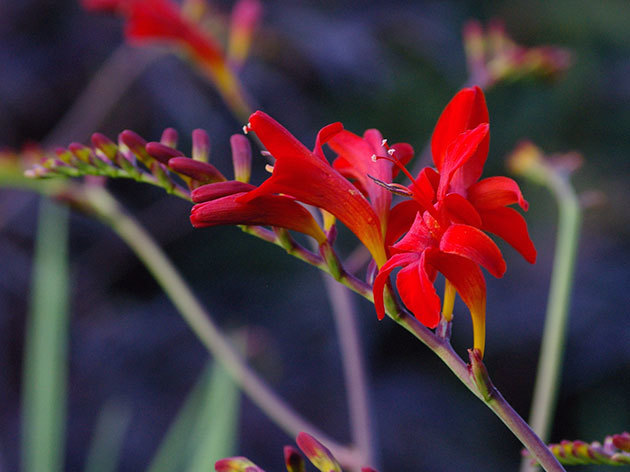
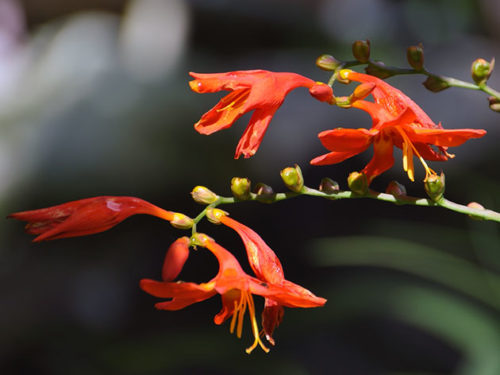
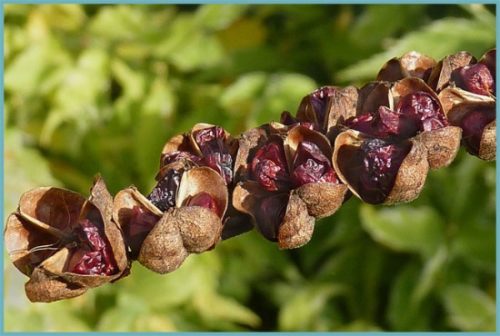
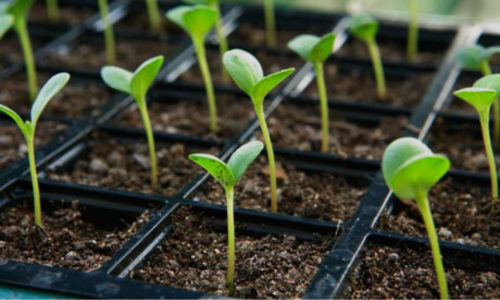
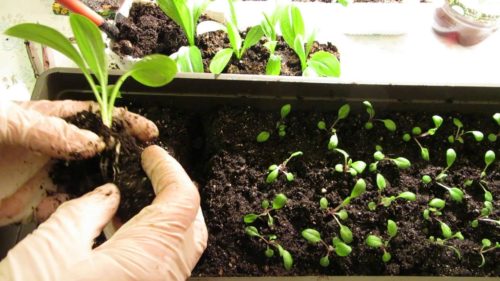
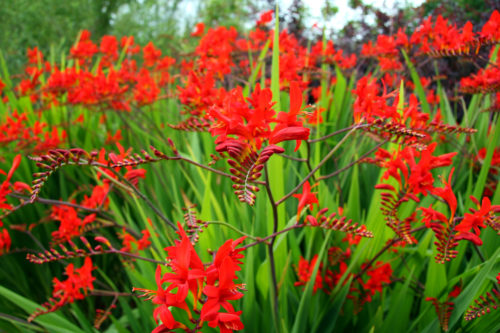
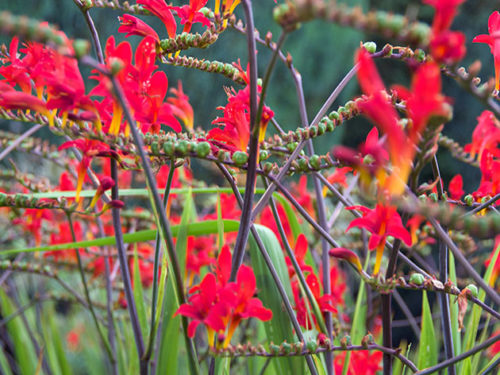
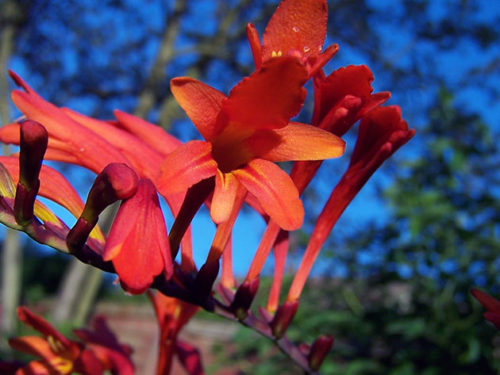

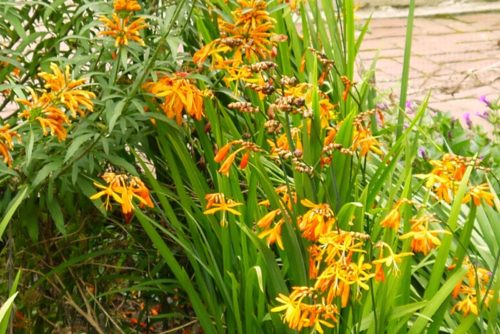
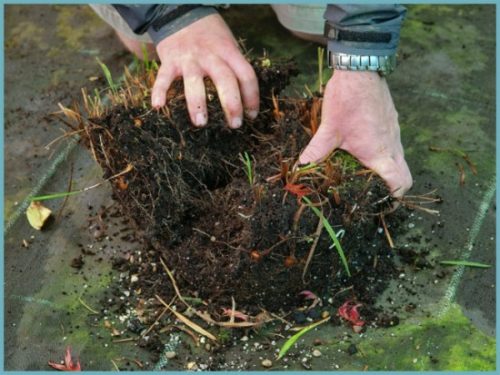
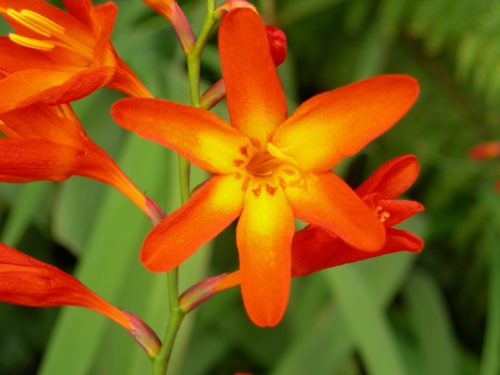
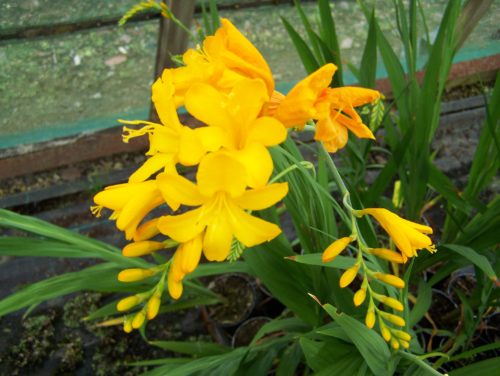
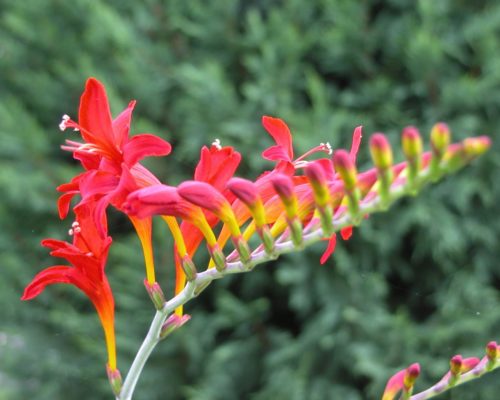
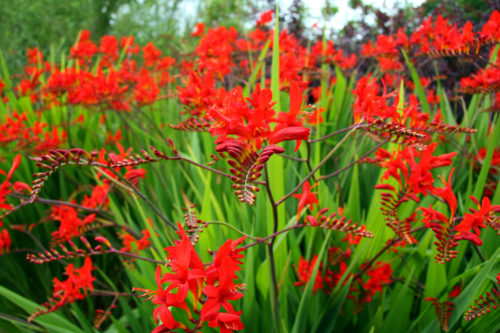
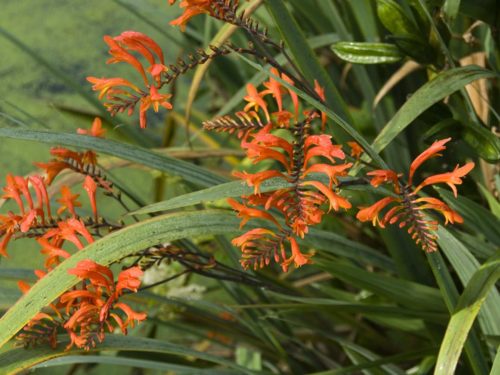
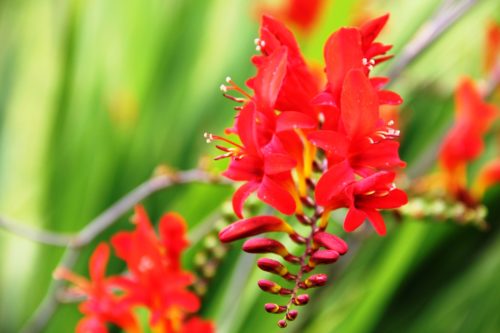
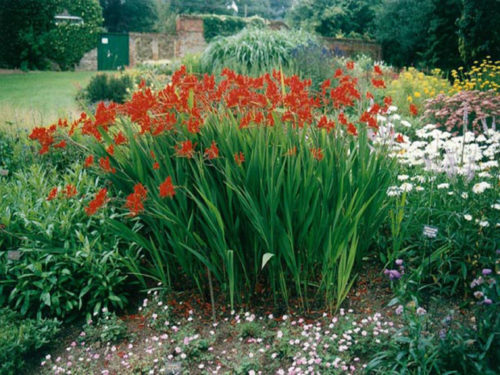
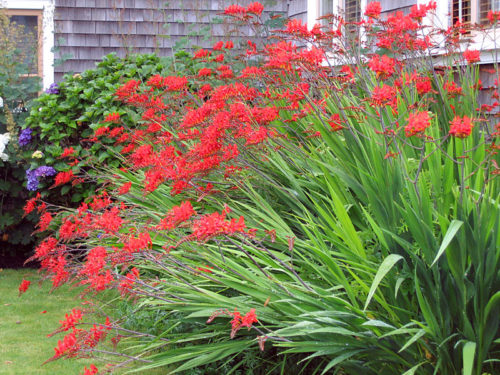














 Start a discussion ...
Start a discussion ...